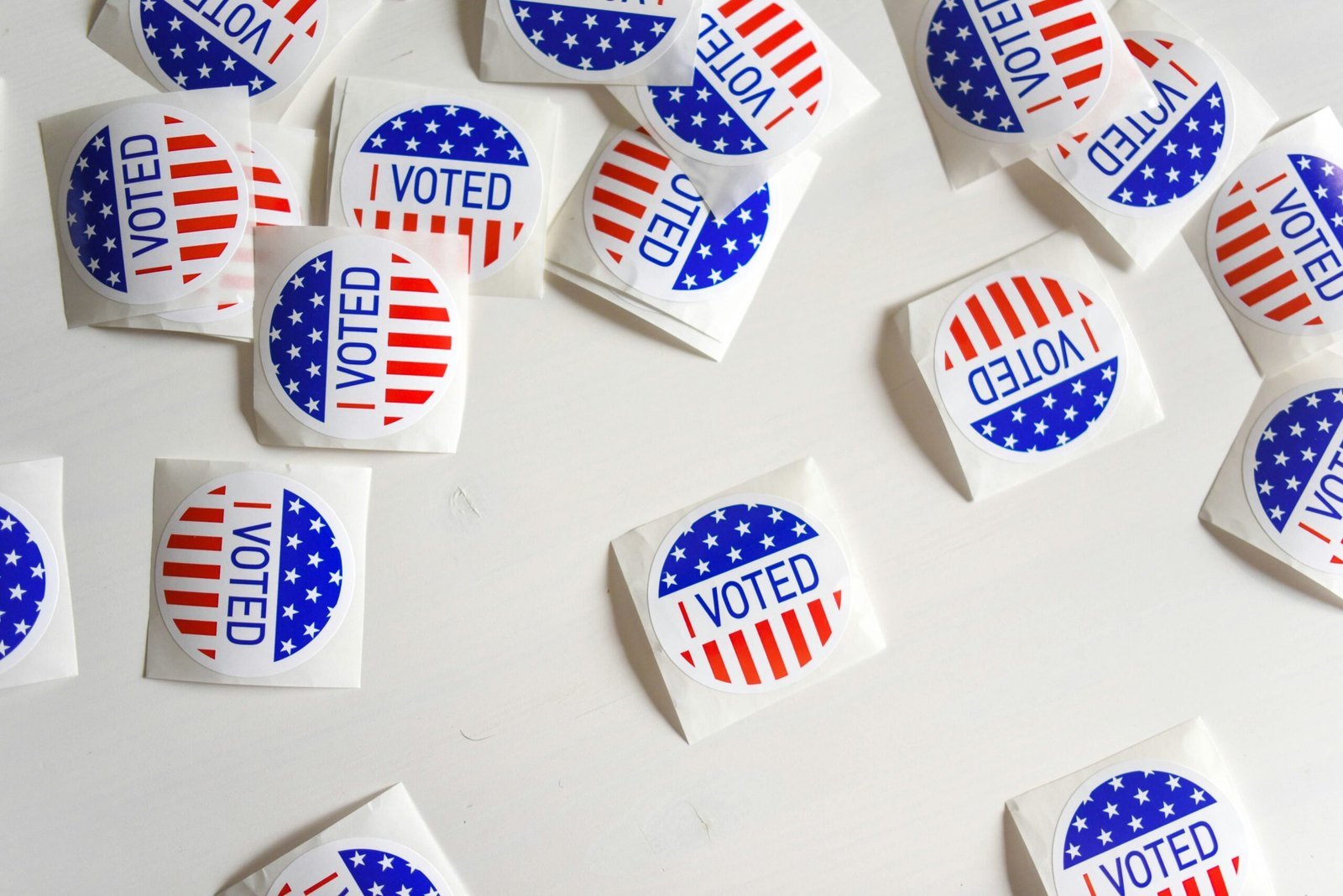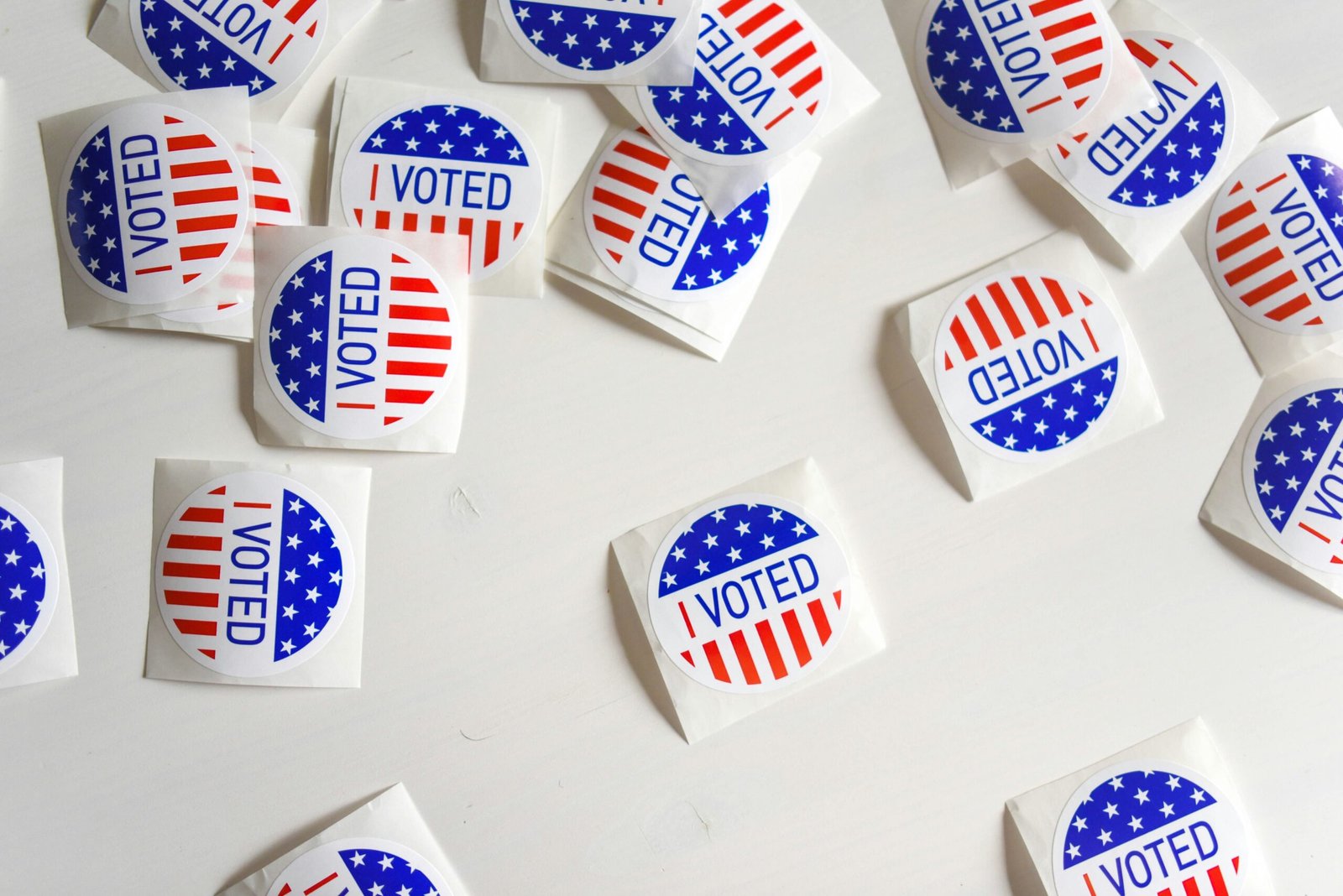
The Current Political Landscape
The political landscape in the United States has undergone significant transformation following the re-election of Donald Trump. His presidency has been marked by deep divisions within the electorate, and various actions taken by his administration have raised important constitutional questions. Issues ranging from immigration policies, trade agreements, and social justice movements have ignited passionate responses across the political spectrum, dividing not only Democrats and Republicans but also moderates and independents alike.
Many Americans have found themselves disillusioned by the traditional parties. Part of the current dialogue pertains to constitutional concerns that have emerged from Trump’s leadership style and policy decisions. Critics argue that his approach has tested the limits of presidential power and raised debates regarding executive overreach, accountability, and the preservation of democratic institutions. This environment showcases the urgent need for dialogue about alternative frameworks that might better accommodate the diverse views within the populace.
The rising discourse surrounding the formation of a new political party reflects a growing sentiment that existing structures may not fully represent or address the issues facing contemporary America. Advocates for this movement argue that a new party could introduce fresh perspectives and create a platform focused on inclusivity, policy integrity, and community engagement. Furthermore, as citizens increasingly yearn for political leaders who espouse values of transparency and procedural fairness, an exploration of this potential political shift holds significant relevance. Such a development may lead to a realignment in electoral dynamics and the political conversation at large.
Therefore, understanding the current political landscape is crucial for evaluating the feasibility and implications of establishing an alternative political party. The conversations surrounding this topic are not merely theoretical; they represent a complex interplay of ideology, governance, and the populace’s desire for meaningful representation amidst constitutional concerns.
Understanding the Threats to the Constitution
Under the administration of Donald Trump, several actions have raised concerns regarding adherence to the Constitution, leading experts and citizens alike to question the integrity of constitutional governance. Notably, there have been allegations related to the executive branch overstepping its bounds, potentially undermining the balance of powers fundamental to American democracy. The separation of powers doctrine, which delineates the responsibilities of the legislative, executive, and judicial branches, is crucial for preventing any single entity from becoming too powerful.
One prominent issue has been the administration’s approach to immigration policy, particularly the implementation of the travel ban against certain countries. Critics argued that this policy was not only discriminatory but also violated constitutional rights that protect against unreasonable search and seizure and guarantee equal protection under the law. Historical precedents can be drawn from similar executive orders, such as those during World War II that unjustly confined Japanese Americans. These instances highlight how fear can lead to violations of civil liberties, emphasizing the importance of protecting the Constitution against potential overreach.
Moreover, Trump’s interactions with the judiciary have been contentious, raising alarms about the erosion of judicial independence. When the executive branch questions court rulings or disparages judges, it poses a risk to the checks and balances pivotal in safeguarding the Constitution. Analysts from various fields, including law and political science, have noted that such actions could foster a culture of impunity, where constitutional violations are normalized. Over time, this erosion can diminish public trust in institutions dedicated to upholding rights and freedoms.
As these actions unfold, it becomes increasingly vital to maintain a vigilant stance towards constitutional integrity. Understanding the implications of these threats is essential for evaluating the broader effects on American democracy and the rule of law.
The Rise of Third Parties in American Politics
Throughout American history, third parties have intermittently emerged, attempting to carve out a niche in a predominantly two-party system. These movements often arise in response to perceived shortcomings of the major political parties, aiming to represent specific interests or ideologies that remain overlooked. Notable third parties include the Populist Party in the late 19th century, the Progressive Party in the early 20th century, and more recently, the Reform Party and the Green Party. Each of these parties sought to address specific societal concerns but faced significant hurdles in gaining mainstream traction.
One of the primary factors that have historically stunted the growth of third parties is the electoral system itself, which favors a winner-takes-all approach. This system discourages voters from supporting third-party candidates due to the fear of “wasting” their votes. Additionally, with the substantial resources and organizational strength of the Democrats and Republicans, third parties often struggle to achieve the visibility and funding necessary to compete effectively.
Moreover, the American political landscape has been characterized by voter polarization, especially in recent years. This polarization has intensified since the 2016 election, creating an environment where partisan loyalty overshadows the appeal of alternative political movements. However, the contemporary landscape may present opportunities for a new political party. The growing disillusionment with established party politics and the increasing demand for representation of diverse viewpoints could foster a unique environment for a third party to flourish. If a movement can effectively harness this dissatisfaction and articulate a clear, compelling vision for the future, it may successfully navigate the challenges that have previously hindered third-party success in America.
Public Sentiment: Are People Ready for a New Political Party?
The American political landscape has been characterized predominantly by a two-party system for over a century. However, recent trends indicate a notable shift in public sentiment that may suggest a growing appetite for a new political party. Polling data from various reputable sources indicates that a significant portion of the electorate expresses dissatisfaction with both the Democratic and Republican parties. For instance, surveys conducted in late 2023 reveal that nearly 60% of respondents believe that neither party adequately represents their views, a sentiment echoed across demographic lines.
Furthermore, social media platforms and community forums have become vibrant arenas for the expression of political discontent. Users frequently articulate frustrations about partisanship and the perceived ineffectiveness of current leaders. Hashtags advocating for alternative political movements gain traction, providing a barometer of public interest in viable alternatives to the mainstream parties. Discussions surrounding the emergence of independent candidates and third-party movements reflect a palpable desire for political reform and innovation among the electorate.
Additionally, the rise of grassroots organizations advocating for a new political party underscores the growing momentum behind this narrative. These organizations often cite issues such as healthcare, education reform, and climate change as pivotal areas where traditional parties have failed to act effectively. As the 2024 election approaches, the question remains: are Americans sufficiently disillusioned with the two-party paradigm to rally behind a new political entity? Given the rising frustrations and the increase in discussions surrounding alternative parties, it appears that a segment of the population is indeed ready for change, albeit the course these efforts will take remains unclear.
Ideological Framework: What Should a New Political Party Stand For?
In the context of American politics, the emergence of a new political party begs the question: what foundational principles should it adopt to resonate with a broad audience? A successful new party must navigate the prevailing ideological spectrum while establishing fresh, actionable policies that address pressing societal challenges. Key issues such as healthcare, climate change, and income inequality are increasingly polarizing yet lack robust bipartisan consensus, providing fertile ground for a new political platform.
Firstly, in the realm of healthcare, there is a growing recognition of the need for accessible, affordable care for all Americans. A new political party could champion universal healthcare, proposing public options that cover all citizens, irrespective of income or employment status. By positioning healthcare as a human right, the party could tap into widespread frustration over rising costs and the inadequacies of the current system, thus fostering broad support across various demographics.
Secondly, climate change represents another critical area lacking cohesive bipartisan strategies. A new political party could advocate for comprehensive climate policies that prioritize renewable energy investments, sustainable agriculture, and emission reduction initiatives. Framing climate action in terms of job creation and economic resilience may appeal to those who are skeptical or fearful of radical changes, making the agenda more approachable and palatable.
Lastly, income inequality has reached alarming levels, presenting an opportunity for a new political party to push for structural reforms. Proposals such as progressive taxation, improved labor rights, and increased minimum wage could resonate with everyday Americans who feel left behind. By addressing wealth disparity with empathy and pragmatism, the new party could attract a diverse coalition of supporters seeking substantive change.
In conclusion, if a new political party is to enact meaningful change in America, it must firmly establish its ideological framework by addressing critical issues such as healthcare, climate change, and income inequality in ways that mobilize a broad spectrum of the electorate.
Challenges Facing the Formation of a New Political Party
The establishment of a new political party in the current American political landscape presents numerous challenges, both logistical and financial. First and foremost, one of the critical hurdles is campaign financing. New political entities often struggle to amass the necessary resources to compete against entrenched parties like the Democrats and Republicans. Traditional funding avenues, such as large donors and corporate sponsorships, are frequently dominated by established political factions, making it difficult for newcomers to gain financial backing. Without substantial funds, a new political party may find it impossible to mount effective campaigns, create compelling advertisements, or compensate qualified staff.
Furthermore, securing ballot access poses a significant obstacle. Each state has its own unique regulations for establishing a party and getting candidates on the ballot. Many states require a substantial number of signatures from registered voters, which can be a daunting task for a nascent party with limited recognition. The complex web of state laws can create disparities in access, allowing established parties to maintain their dominance while making it challenging for newcomers to gain a foothold.
Media coverage also plays a crucial role in political success, and a new party may struggle to obtain the same level of attention as established entities. The media often prioritize stories related to incumbent candidates or existing party platforms, leaving little room for unfamiliar movements. This lack of visibility can hinder public awareness and acceptance, further complicating the party’s efforts to attract a following and influence the political dialogue.
Finally, attracting experienced political figures to join a new party is another substantial challenge. Seasoned politicians may hesitate to align themselves with a nascent movement due to uncertainty regarding its viability and potential for success. This reluctance can create a cycle of disadvantage, making it even more difficult for new parties to build credibility and a strong foundation. To overcome these numerous challenges, careful planning and a strategic approach will be essential for any new political party aiming to effect change in America.
Case Studies: Successful New Political Movements
Throughout history, numerous new political movements have emerged, challenging established parties and shifting the political landscape both in the United States and around the world. One notable example is the Tea Party movement, which arose in the U.S. during the late 2000s in response to economic policy decisions and a perceived overreach of government. By leveraging grassroots mobilization and utilizing social media for effective outreach, the Tea Party successfully influenced the Republican Party and brought a wave of conservative candidates to the forefront, illustrating the impact of new movements on traditional political frameworks.
Another pertinent example is the Momentum movement in the UK, which emerged to support Jeremy Corbyn’s leadership within the Labour Party. Momentum’s strategy involved grassroots organizing, fostering local chapters, and harnessing the power of social media to engage younger voters disillusioned with mainstream politics. Their commitment to social justice, economic equality, and a participatory democracy resonated with a large segment of the electorate, ultimately contributing to significant electoral gains for the Labour Party in recent years.
Looking internationally, the Five Star Movement in Italy represents another successful case study of how new political party dynamics can take hold. Launched in 2009, it rapidly captured public attention by combining anti-establishment rhetoric with direct appeals to citizens through an innovative online platform. This approach enabled the Five Star Movement to challenge the traditional political elite effectively. Its messaging centered on transparency, sustainability, and grassroots participation, resonating with a populace disillusioned by existing parties.
These case studies underscore critical strategies that new political movements have employed, including grassroots mobilization, effective messaging, and innovative outreach methods. Each of these movements illustrates how new political parties can galvanize public support by addressing pressing societal issues and emphasizing grassroots involvement, highlighting important lessons for any upcoming political initiatives within the United States.
The Role of Grassroots Movements and Activism
Grassroots movements and activism play a pivotal role in the potential emergence of a new political party, particularly in the context of America’s current political landscape. These movements are essential for mobilizing support and fostering a sense of community among individuals who share common political goals. By leveraging various strategies, grassroots organizations can significantly contribute to building a viable political entity capable of challenging established parties.
One of the most effective tools used by grassroots movements is social media campaigns. Platforms such as Twitter, Facebook, and Instagram allow activists to engage with a wide audience, share their message, and mobilize support rapidly. These platforms facilitate the dissemination of information, update followers on events, and highlight the importance of grassroots efforts. Additionally, social media campaigns can amplify voices that may otherwise go unheard, encouraging participation from underrepresented groups.
Community organizing is another cornerstone of grassroots activism. By fostering relationships within local neighborhoods, activists can address specific issues that resonate with residents. Organizing town halls, community meetings, and rallies allows individuals to voice their concerns, fostering dialogue and solidarity. Through these efforts, activists can cultivate a sense of ownership and belonging, encouraging communities to become active participants in the political process.
Local mobilization efforts, including door-to-door canvassing and phone banking, are instrumental in engaging potential supporters on a personal level. These techniques enable activists to deliver their message directly and provide a platform for individuals to express their views and concerns. By establishing a presence in the community, grassroots movements can create a network of loyal supporters who are motivated to advocate for change.
Through these diverse strategies, grassroots movements can galvanize the public, build momentum for a new political party, and ultimately influence the broader political landscape in America. The collective power of individuals coming together for a common cause is a formidable force that can reshape political dynamics, ensuring that new ideas and perspectives are represented in governance.
Conclusion: The Future of American Politics and the Role of New Political Parties
As America stands at a crossroads amid the turbulent political landscape shaped by former President Trump’s administration, the exploration of new political parties emerges as a significant topic. The discussions throughout this blog post have underscored the evolving nature of American politics, particularly in relation to the constitutional challenges faced today. These challenges may provide fertile ground for the emergence of new political movements that strive to address the grievances of those disenchanted with the current political dichotomy.
Throughout the blog, we have examined the potential impact of a new political party in rejuvenating democratic ideals. Such a party could offer innovative approaches to governance, fostering inclusivity and bridging the gap between diverse ideological groups. By harnessing the aspirations and concerns of citizens, a new political party can become a formidable force advocating for comprehensive policy reform that resonates with a broader electorate. The rise of independent candidates and grassroots movements highlights a growing desire for alternatives to traditional party structures, reflecting a shift in public sentiment.
Moreover, the historical context of political disruptions in America’s past serves as a reminder that change is possible. The foundations of democracy are resilient but require active participation from the populace. As citizens grow increasingly aware of the limitations of existing political frameworks, they may seek to explore new avenues for political expression and representation. The role of new parties thus ties directly to the capacity for collective action and the pursuit of a more representative democracy.
In conclusion, while Trump’s re-election may pose challenges, it also serves as a catalyst for discourse on the necessity of new political parties in America. The future of American politics lies in the hands of its citizens and their willingness to embrace change, opening the door for fresh perspectives and reinvigorated civic engagement. The evolution of political parties can pave the way for a more adaptive democracy capable of addressing both emerging constitutional concerns and the diverse needs of its citizens.



